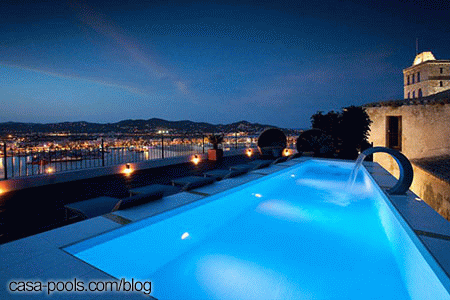|
|
|
Published On: March 25, 2014
By: James Phillips, Nebraska
|
GENERAL CATEGORY
|
HOW TO WINTERIZE SWIMMING POOL
|

|
|
how to winterize swimming pool
|
- The main purpose in winterizing your inground swimming pool is to protect it from damage due to freezing water. Another is to keep it as clean as possible for the next season. Closing your swim pool properly can save you a lot of work when it comes time to open the swimming pool for the summer.
- The first step in the winterization procedure is to make sure your water chemistry is balanced. You should make sure that your pH, Total Alkalinity, and Calcium Hardness are all balanced. By balancing your water chemistry you are protecting the surface of the pool from staining and etching.
- Adding a winterizing chemical kit to your water will help keep it blue and clear for the next season. Be sure to follow the manufacturer`s instructions for the kit.
- Do not use a floater that contains a strong oxidizer (chlorine or bromine) as the floater will stick against the wall and stain and/or bleach your wall, especially a vinyl liner. For the same reasons DO NOT throw chlorine or bromine tablets into the pool. They will sink to the bottom and damage your pool`s surface.
- When water freezes, it expands. This can cause great damage to your pool, pool plumbing, and its filter system. If you are closing up your pool for the winter, you should always take precautions to protect from freeze damage no matter where you live. You can never be sure that it will not drop below freezing, even in the Sun Belt.
- The next step is to lower the water below the mouth of your skimmer(s). This will get the water out of the throat of the skimmer which can be easily damaged if water were to freeze there.
- Another option for vinyl liner pools is to put an Aquador over the mouth of the skimmer. This is a plastic dam which holds out the water from the skimmer, allowing you to leave the water level up for the winter. This will help in supporting your cover and also help keep the liner from "floating" if the winter is your rainy season. Sorry, they have not invented a similar device for concrete pools yet.
- Blow out the water from your plumbing lines. You can do this using a shop vac. Use the discharge of the shop vac to blow water out of each line from the filter system. As the water is purged from each line, you will need to put a plug in the lines at the pool end. Some fittings will allow for a threaded plug, which is best. Be sure to use a plug with a rubber gasket or "O" ring to make a seal, or the water may fill the line back up. If your fittings are not threaded, then use a rubber freeze plug.
- In the skimmer(s) you should use a Gizzmo to seal the line. This device is a hollow tube which will collapse if water should get into the skimmer and freeze. Be sure to put Teflon tape on the threads of the Gizzmo to make a seal and to ease removal in the spring. It is usually impractical to put a plug in the main drain if you have one, but its extreme depth will normally protect it from freezing.
- You should cover your pool to keep out the debris. The type of cover you use will depend upon several factors.
- The final step? You must drain all the water from your filter equipment.
- The filter should have a plug at the bottom that will allow it to drain.
- Be sure to open the air relief valve on top if you have one.
- Put the multiport valve in the closed or "winterize" position and remove the pressure gauge.
- Drain the pump. There may be two plugs to remove here.
- After draining the pump, turn it on for a brief second to get the water out of the veins of the impeller. Do not run the pump more than a second or two because you can burn out the seal very quickly.
- You should have let the chemicals (chlorine/bromine tablets) run out of your feeder so that no chemicals are left in it. Leaving chemicals in your feeder over the winter can cause damage to it and other equipment.
- You will now be able to drain your chemical feeder and automatic cleaner pump, heater, and any other filter equipment that has water in it.
- If you put all the plugs that you have removed into the pump strainer basket, they will be easily found in the spring.
- It is a good idea to take the pressure gauge inside for the winter because water collects in its tube which can freeze and cause breakage.
- Do not put the plugs back on the equipment. If equipment should get water in it, the plugs will prevent proper drainage.
|
|
|
|
|
